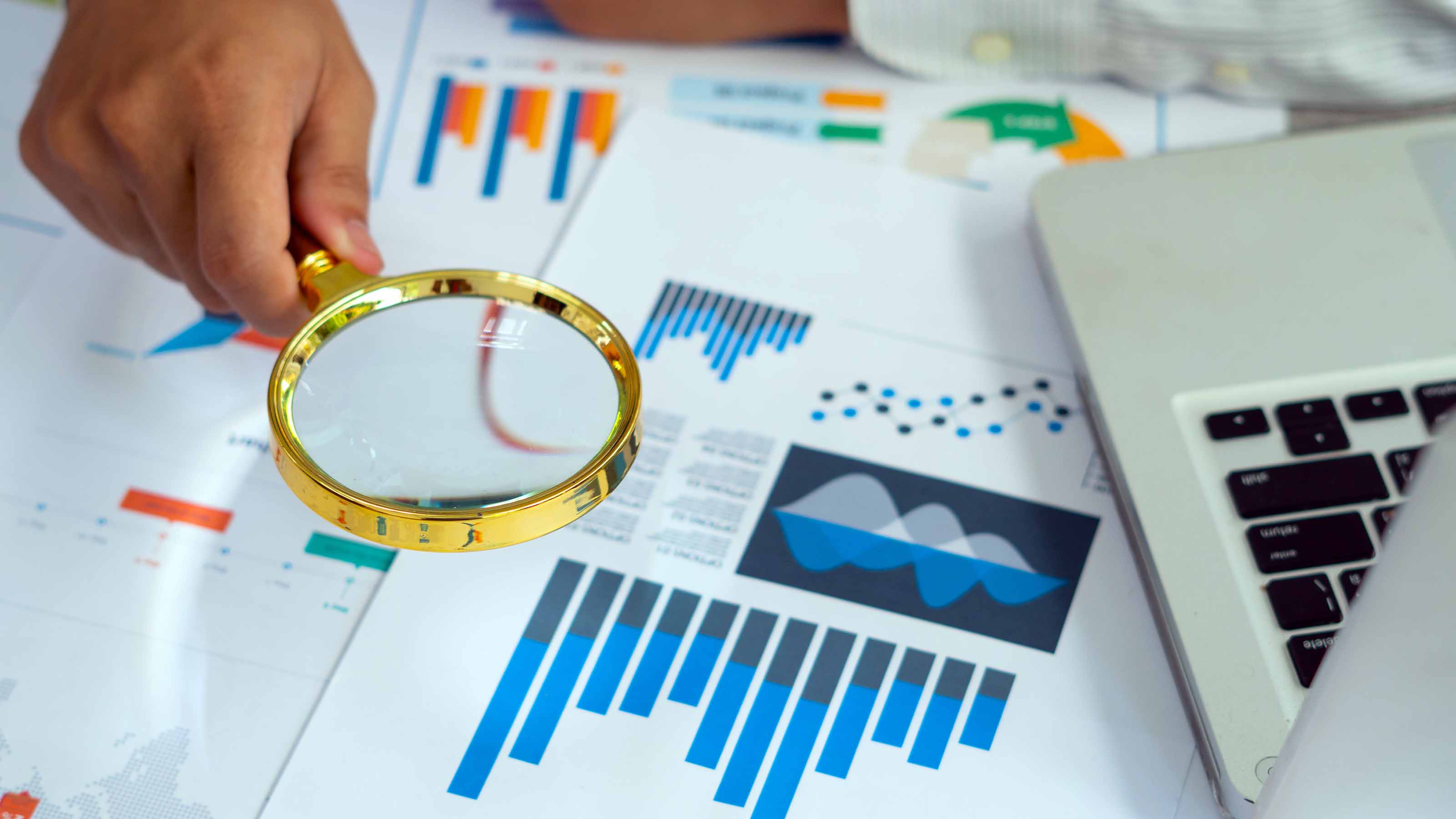What You Need to Know About Mutual Fund Returns
A guide to the many ways these popular investments measure their performance.


Past performance may be little guarantee of future results, but when we assess investments, especially mutual funds, past performance is an informative measure. But it's not the only one. The trick is to understand what you're looking at when you scrutinize performance, and it's come to our attention that some investors are misreading key facets of mutual fund returns.
To set the record straight, we've put together a primer based on questions we've received from readers about fund returns. Knowledge is power, after all, and a better understanding will help you make smarter investment decisions. All returns and data are through May 6.
What's a Total Return?

Sign up for Kiplinger’s Free E-Newsletters
Profit and prosper with the best of expert advice on investing, taxes, retirement, personal finance and more - straight to your e-mail.
Profit and prosper with the best of expert advice - straight to your e-mail.
A fund's total return, as it appears in our magazine's fund tables, on the fund's website or in its prospectus, is the rate of return over a specified period. According to rules set by the Securities & Exchange Commission, the return is adjusted for any fees or expenses charged to investors, including annual fees and sales charges (loads) on shares purchased. So no matter how high the fees, they've already been accounted for in the returns.
That's why it’s important to make sure you're eyeing the right share class of any given fund before you start digging into its returns. Some fund companies have multiple classes, say Class A or C or I. Each one may charge a different expense ratio and sales load, and that impacts returns.
"A lot of people don't understand that different share classes of the same fund will have different returns because the fees can vary widely," says Lauren Gadkowski Lindsay, a certified financial planner in Hyannis, Massachusetts.
The total return also assumes reinvestment of all dividends and capital gains distributions, as well as any sales charges associated with reinvesting those payouts. The calculation is designed to help investors compare the performance of funds, even if they have different expense ratios or loads. Just make sure the dates of the returns you're scrutinizing match up, especially if you're comparing returns from different sources. Timing matters.
Why Doesn't My Personal Return Match the Fund's Reported Returns?
Make sure you're looking at the return for the share class you hold. Then, bear in mind that the returns you see listed in the fund's prospectus or website, or on fund-tracker sites such as Morningstar.com, assume a lump-sum investment on the first day of the reporting period. If your investment period starts on a different date, or if you're dollar-cost averaging (investing fixed sums at regular intervals), your return will be different.
Remember, too, that fund performance numbers assume all dividend, interest and capital gains distributions were reinvested. If you took a cash payout instead of reinvesting it in any instance, that would also affect your performance.
Are the Fund's Annualized Returns the Same as an Average of Annual Returns Over That Period?
Yes, roughly speaking, but not exactly. When it comes to periods of longer than one year, typically you'll see annualized returns. These are basically the average annual returns earned over the period. The actual math behind annualized returns, called a geometric mean, is more complicated than a simple arithmetic average, but essentially, a three-year annualized return reflects what you've earned in the fund in each of the past three years.
Annualized returns differ from cumulative returns, which are aggregate returns of an investment over time. They're not often reported. We only occasionally cite them in our stories. The cumulative five-year return of the Vanguard 500 Index Fund (VFIAX), for instance, is 87.8%, but its annualized five-year return is 13.4%. (The cumulative return doesn't average to 13.4% because annualized returns capture the effects of compounding by taking into account the change in the value of your investment.)
You Can Always Bank on Funds With Great Long-Term Returns, Right?
Not necessarily. Annualized returns can be skewed by a great year or two and mask a mediocre or downright disastrous year in between (and vice versa).
You might think, for instance, that a fund with a great 10-year record is a great investment. The Centre American Select Equity Fund (DHAMX), for instance, which invests in large-company stocks, has a market-beating 10-year annualized return of 14.1%. But on closer examination, it has lagged the S&P 500 Index in six of the past 10 calendar years.
In short, it's always a good idea to dig into a fund's calendar-year returns, too. Beating its benchmark (or similar funds) in eight of the past 10 years, say, might be a better measure of success than an annualized return skewed by one or two outlier years.
Can Cost Basis Be Used to Measure Performance?
No. Eyeballing your cost basis – the amount you've shelled out for a particular investment – and comparing it with the fund's current value may seem a quick, easy way to gauge performance. But it's best used for tax-filing purposes to calculate capital gains and losses, not for gauging cumulative returns.
When a fund pays a distribution, in the form of a dividend or capital gain, it becomes part of the overall return you've earned in the investment. If those distributions are reinvested in the fund, however, they are added to your cost basis because the payout is used to buy more shares.
Consider this example: You invest $10,000 each in two funds called Fund A and Fund B. After one year, the underlying assets in Fund A have increased $1,000 in value, but because no distributions have been made your cost basis in the fund remains $10,000. Fund B, on the other hand, has not increased in value, but it has distributed $1,000 in dividends, which were re-invested, pushing your cost basis up to $11,000. The one-year performance of both funds is the same, a 10% return, but it might not seem that way to someone looking at the different cost bases of the two funds.
Shouldn't I Focus on After-Tax Returns, Because That's What I'm Actually Pocketing in the End?
After-tax returns appear in fund prospectuses. You can ignore them if you hold the fund in a tax-advantaged account because earnings are tax-deferred anyway.
If you own the fund in a taxable account, these returns offer a glimpse at how much of the return is left after taxes are taken out. But be careful about generalizations. The calculation uses the highest individual federal tax rate and doesn't include state or local taxes, so it may not even match your situation.
How Does a Fund's 30-Day Yield Measure Performance?
It doesn't, really. A fund's yield is a measure of how much income you might receive from the fund over the course of a year. But like other distributions, the payouts become part of the fund's total return. The 30-day yield will matter most to bond fund investors. If you have $50,000 to invest, then a fund with a 30-day yield of 2% could provide $1,000 a year in income.
The way this particular yield is calculated is designed to allow investors to reliably compare one fund's 30-day yield to another’s. Just make sure you compare yields of the same date – especially now, with interest rates on the rise. The bond index, Bloomberg U.S. Aggregate Bond, sported a 30-day yield of 2.32% in early March, but by early May, it had a yield of 3.61%.
Get Kiplinger Today newsletter — free
Profit and prosper with the best of Kiplinger's advice on investing, taxes, retirement, personal finance and much more. Delivered daily. Enter your email in the box and click Sign Me Up.

Nellie joined Kiplinger in August 2011 after a seven-year stint in Hong Kong. There, she worked for the Wall Street Journal Asia, where as lifestyle editor, she launched and edited Scene Asia, an online guide to food, wine, entertainment and the arts in Asia. Prior to that, she was an editor at Weekend Journal, the Friday lifestyle section of the Wall Street Journal Asia. Kiplinger isn't Nellie's first foray into personal finance: She has also worked at SmartMoney (rising from fact-checker to senior writer), and she was a senior editor at Money.
-
 Tax Time: Does Your Kid Influencer Owe Taxes?
Tax Time: Does Your Kid Influencer Owe Taxes?State Tax Some minors are making big money on social media. Here’s how to know if they need to file taxes.
By Gabriella Cruz-Martínez Published
-
 10 Major AI Companies You Should Know
10 Major AI Companies You Should KnowThese 10 AI companies are at the forefront of machine learning. Find out how they’re driving innovation and jostling to be the biggest players in the game.
By Tom Taulli Published
-
 SEC Cracks Down on Misleading Fund Names: The Kiplinger Letter
SEC Cracks Down on Misleading Fund Names: The Kiplinger LetterThe Kiplinger Letter The SEC rules aim to crack down on so-called “greenwashing” — misleading or deceptive claims by funds that use ESG factors.
By Rodrigo Sermeño Published
-
 For a Concentrated Stock Position, Ask Your Adviser This
For a Concentrated Stock Position, Ask Your Adviser ThisThere can be advantages to having a lot of stock in one company, but ‘de-risking’ can help avoid some significant disadvantages.
By Robert Gorman Published
-
 Three Financial Tips for Women’s History Month
Three Financial Tips for Women’s History MonthWomen still face unique economic and social challenges today, so here are some key things to consider that can lead to a more secure financial future.
By Julia Pham, CFP®, AIF®, CDFA® Published
-
 Worried About Checking Your Portfolio? Don't Be: Things Are Looking Up
Worried About Checking Your Portfolio? Don't Be: Things Are Looking UpThough the markets are still fluctuating, this expert sees an encouraging upward trend and is giving himself permission to check his investments.
By Andrew Rosen, CFP®, CEP Published
-
 Laid Off With a Severance Package? Here’s How to Make a Plan
Laid Off With a Severance Package? Here’s How to Make a PlanGathering all the relevant information and staying organized is key, as is getting your financial team involved. Here are five financial planning tips to help.
By Michael Aloi, CFP® Published
-
 The Markets Were Miserable Last Year, But That’s Great News
The Markets Were Miserable Last Year, But That’s Great NewsIt’s all about perspective. Hopefully, you learned that your financial plan can withstand market downturns. If not, now you know you need to make adjustments.
By Andrew Rosen, CFP®, CEP Published
-
 The 5 Best Actively Managed Fidelity Funds to Buy Now
The 5 Best Actively Managed Fidelity Funds to Buy Nowmutual funds In a stock picker's market, it's sometimes best to leave the driving to the pros. These Fidelity funds provide investors solid active management at low costs.
By Kent Thune Last updated
-
 6 Questions Your Financial Adviser Should be Asking
6 Questions Your Financial Adviser Should be AskingTo effectively help you with your retirement strategy, a retirement professional must get a clear picture of what you have and what you need.
By Tyler Hill, Investment Adviser Representative Published